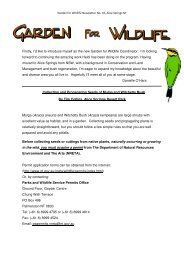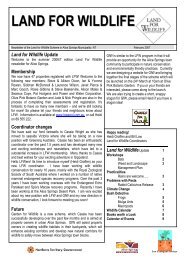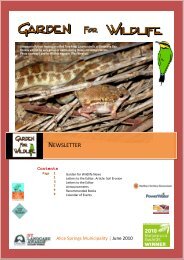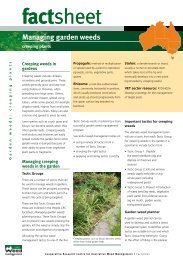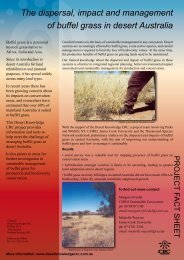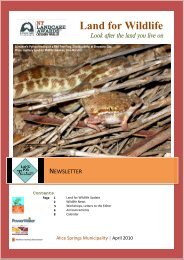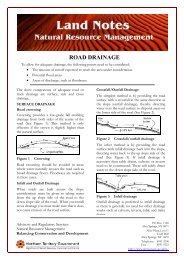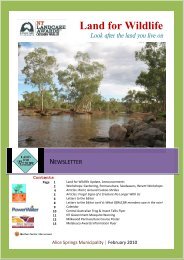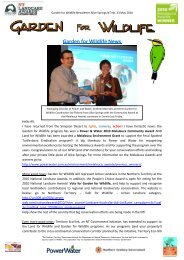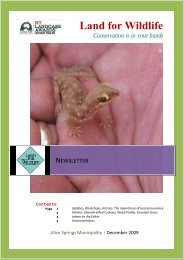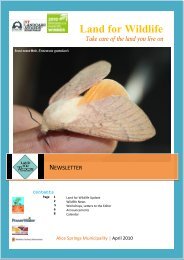Identifying Nests, Tracks, Scats, Burrows, & Other Signs
Identifying Nests, Tracks, Scats, Burrows, & Other Signs
Identifying Nests, Tracks, Scats, Burrows, & Other Signs
You also want an ePaper? Increase the reach of your titles
YUMPU automatically turns print PDFs into web optimized ePapers that Google loves.
these tracks. <strong>Other</strong> ground birds include Richard’s Pipit, Cinnamon Quail-Thrush and the smaller<br />
Button Quail. It is useful to know the behaviour and preferred habitat of these species to be able to<br />
correctly identify tracks. Field Guides are useful for this.<br />
Mammals<br />
<strong>Tracks</strong><br />
<strong>Tracks</strong> of mammals are often distinguished by the marks made by<br />
different shaped pads on varying feet structures, claws, footprint size and<br />
gait. It is useful to be able to read animal behaviour from the track, and<br />
know the type of habitat you are in. <strong>Identifying</strong> animals from tracks is not<br />
always easy. The best time of day is early morning or late afternoon when<br />
a shadow is cast across the track, making it more visible. At midday tracks<br />
become invisible as the sun is directly above them.<br />
Rabbit: Pictured above is the slow gait of a European rabbit (invasive species). The heel of the hind<br />
foot is normally visible and both hind feet come to rest side by side. A bounding gait leaves only the<br />
impression of the toes on both front and hind feet, and the distance between each group of tracks<br />
increases. Rabbits have five clawed toes on all feet, though the inner toes are small and do not leave<br />
a mark.



